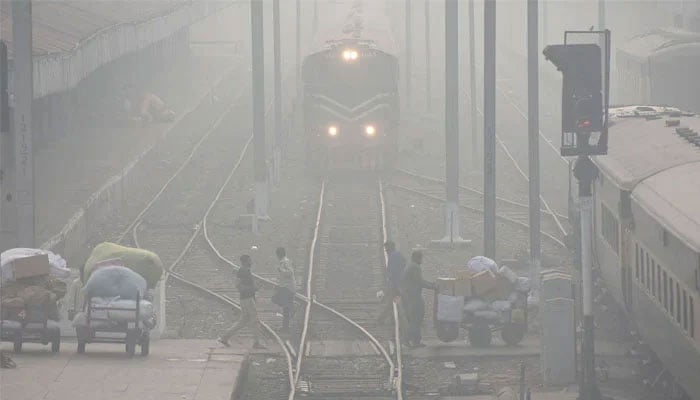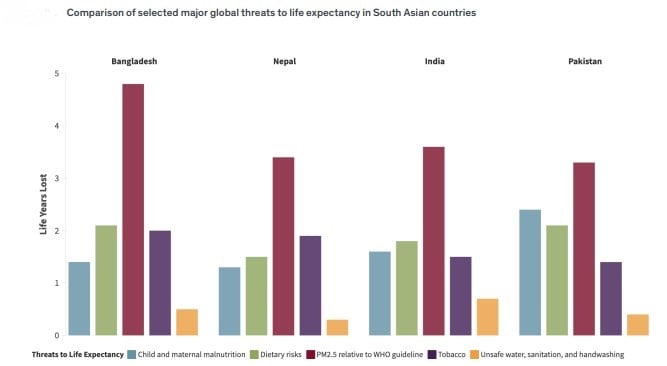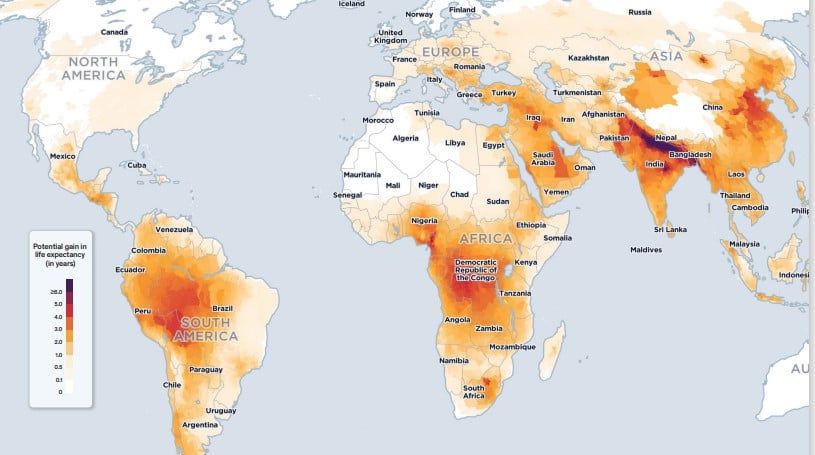Pakistan's poor air quality 'affecting' people's life expectancy
AQLI 2024 annual update says people would be able to live up to 3.3 years due to improved PM2.5 levels
August 28, 2024

- Pakistan's population breathes air that doesn't meet PM2.5 standard.
- Life expectancy to increase by 2.3 years if national standards met.
- Report highlights increase in vehicles, use of fossil fuel in country.
As Pakistanis grapple with the ongoing socio-political, economic, and security issues, they also remain threatened by climate-induced challenges such as air pollution, risking not only their habitat but also their overall health and well-being.
In an annual Air Quality Index (AQLI) report produced by the University of Chicago's Energy Policy Institute (EPIC), the adverse effects of the country's worsening air pollution has been found to significantly affect the life expectancy of its citizens.
According to the report, Pakistanis — as part of South Asia, the world's most polluted region — are exposed to particulate pollution levels that are 22.3% higher than that experienced at the turn of the century.

The report maintained that since virtually the entire population of Pakistan breathes air that doesn't meet the PM2.5 standard set at 15 µg/m³, people's life expectancy could be increased by 2.3 years if the country is able to meet its own PM2.5 standard.
"In Pakistan, where the PM2.5 concentration was 38.9 µg/m³ in 2022 — 10% lower compared to the particulate levels in 2021, the average resident would gain 3.3 years from meeting the World Health Organisation (WHO) guideline," read the AQLI 2024 annual update.
"Those in Peshawar, the most polluted city in the country, would gain 5.6 years," it added.
Elaborating on the increase in factors affecting air pollution, the AQLI underscored an approximately fourfold increase in the number of vehicles in the country since the early 2000s as well as a significant increase in the use of fossil fuel for electricity generation.

Noting that 94 out of 252 countries and territories globally had national standards, making up 80% of the world's population, it highlighted that 37 of those countries weren't meeting them — which amounts to 30%of the world's population.

Terming global pollution as the "greatest external threat to human life expectancy", the report stated that people in the most polluted areas of the world breathe air that is six times more polluted than those in the least polluted areas, which in return, reduces their life expectancy is reduced by an average of 2.7 years compared to those living in the cleanest places.











